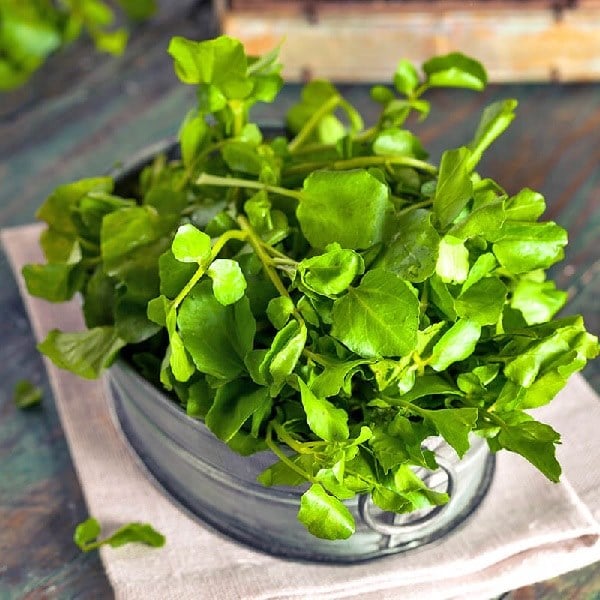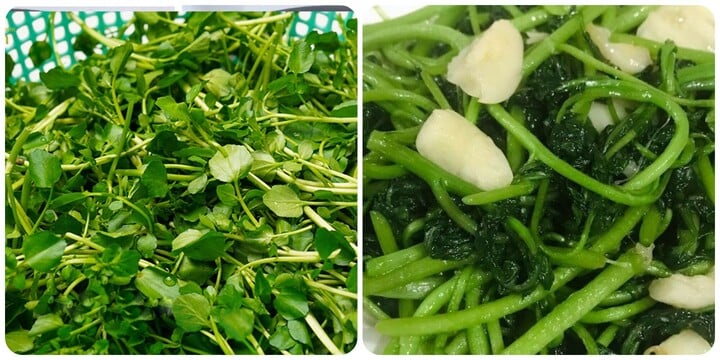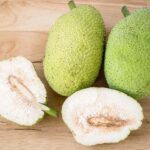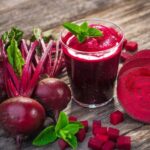Watercress – The Superfood Vegetable with a Nutritional Punch
The United States’ Centers for Disease Control and Prevention (CDC) has ranked watercress as the number one vegetable in its Powerhouse Fruits and Vegetables (PFV) list, scoring a perfect 100 out of 100.
This ranking is based on 17 nutritional criteria, including vitamins A, B6, B12, C, D, E, K, calcium, iron, potassium, zinc, protein, fiber, folate, thiamin, riboflavin, and niacin. Following watercress are cabbage, rainbow chard, and spinach, vegetables that are highly regarded in Western countries.

6 Reasons Why Watercress is a Nutritional Powerhouse
1. Nutritious and Low in Calories
Watercress is packed with vitamins K, A, and C, as well as minerals like magnesium, calcium, and potassium. These essential nutrients support bone health, boost immunity, and enhance nerve function. Notably, this vegetable is almost calorie-free, making it ideal for dieters or those watching their weight.
According to nutritionist Ilana Muhlstein, just 3 cups of watercress daily can provide over 50% of your daily vitamin A, C, and K needs.
2. Heart-Healthy Benefits
Watercress is rich in antioxidants, reducing inflammation and oxidative stress, which are key contributors to heart disease. Additionally, the natural nitrates in watercress help regulate blood pressure, support blood circulation, and protect the blood vessels.
3. Effective Cancer Prevention
Watercress contains glucosinolates, compounds that convert into isothiocyanates when chewed. Isothiocyanates have been scientifically proven to inhibit the growth of cancer cells, particularly in lung and digestive tract cancers.
4. Hormone Balancing Properties
The B vitamins, calcium, and magnesium in watercress help stabilize the nervous system, reduce stress, and regulate hormones, which is especially important for women during their menstrual cycle or perimenopause.
5. Liver Support and Detoxification
Watercress contains natural sulfur compounds that stimulate liver function, enhance its detoxification capabilities, and aid in flushing out toxins from the body.
6. Skin Health and Anti-Aging
With antioxidants like vitamins C, beta-carotene, and lutein, watercress promotes glowing, even-toned skin and boosts collagen production, essential for maintaining skin elasticity and reducing wrinkles.

Important Considerations When Consuming Watercress
- Don’t overeat: Large amounts of raw watercress can irritate the stomach. The recommended intake is about 100g per serving, 1–2 times a week.
- Avoid eating on an empty stomach: Due to its slight spiciness, watercress can cause stomach discomfort or pain if consumed before a meal. It’s best to eat it as part of a main course or after a meal.
- Use caution when taking anticoagulants: The high vitamin K content in watercress may interfere with the effectiveness of anticoagulant medications like warfarin. Consult your doctor before incorporating watercress regularly if you’re on such medication.
- Wash and blanch if consuming raw: Watercress grows in damp conditions and may harbor bacteria or parasites. When eating raw, soak it in salted water and blanch it before consumption.
- Pregnant women should consume it in moderation: Excessive intake of raw watercress during the first trimester may cause mild uterine irritation. However, cooked watercress or moderate consumption is safe and beneficial during pregnancy.






































